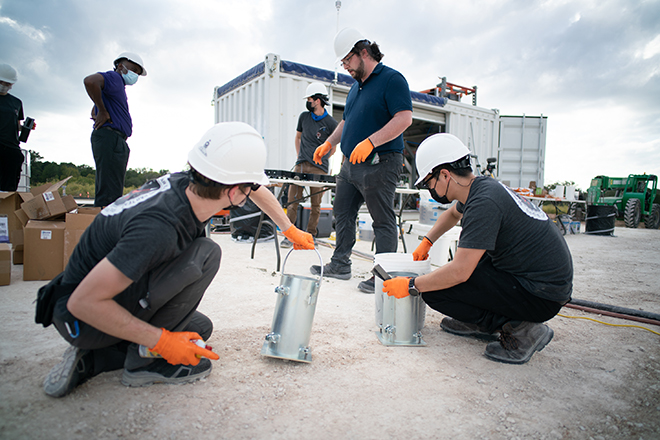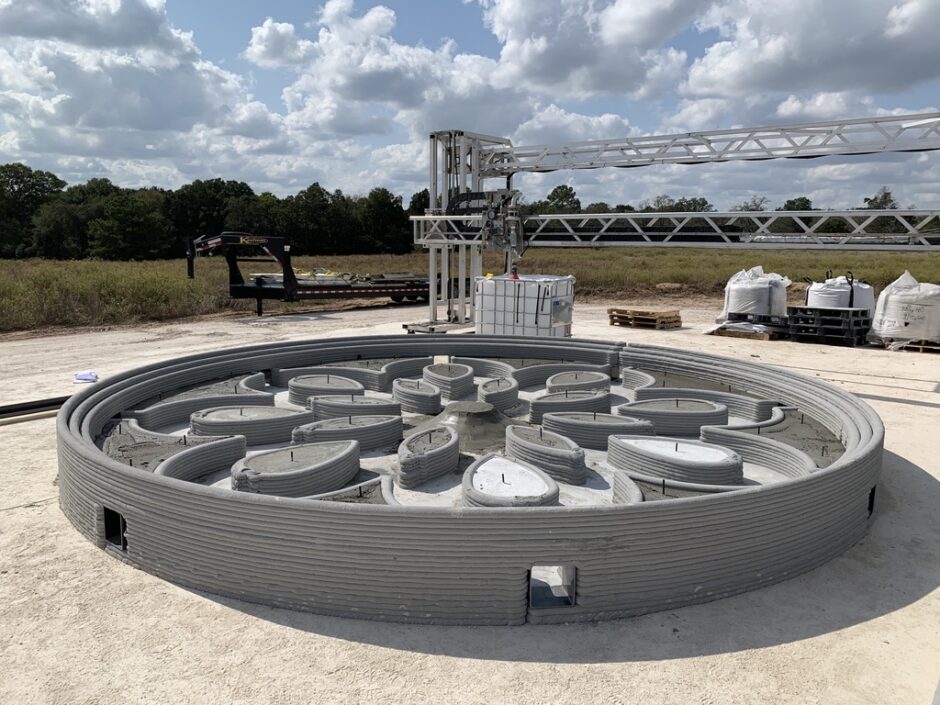As far as nicknames go, Andres Campbell figures he could do worse.
“Maybe in 20 or 40 years I’ll be known as the ‘Lunar Pad Guy,’” joked Campbell, an Integrated Engineering student at Minnesota State Mankato. “All of these projects that I’m working on, all of the end goals are in perfect alignment with what I wanted to do going into this. It’s been easy to motivate myself.”
Campbell’s extracurricular activities during his two years attending Minnesota State Mankato have been, well, extraordinary.

Outside of the classroom, the Edina, Minn. native participated in aerospace projects sponsored by NASA, culminating with the opportunity to lead students from nine universities in developing a 3D lunar pad that could aid astronauts on future missions to the moon—nearly 50 years since the last Apollo landing.
Campbell’s goal is simple, yet the methods are profound and complex. Through innovative 3D technology, Campbell wants to contribute to expanding humans’ presence in space.
“The whole point of me going into aerospace was the goal of advancing our human capability of exploring space,” he said. “That’s been the drive for all of this. … I’ll always be here with pen on paper to do the work.”
Campbell enrolled in Minnesota State Mankato’s Twin Cities Engineering program in fall 2019. By then, he’d already participated in a NASA community aerospace program geared toward writing and evaluating proposals. Campbell had been working with ICON, a renowned 3D printing firm. His proposal to build a subscale version of the 3D lunar pad earned a $10,000 grant from NASA. The Lunar Pad is built to trap lunar dust and reduce billowing cloud formations on the moon, Mars and, closer to home, Earth. Eventually, the landing pad could be constructed from the moon’s lunar regolith material.
“We came up with an idea of a pad that you’d use on another planet,” he said. “Then we’d get deeper in the weeds: ‘How would you make this? What would it look like? How are those restrictions intertwined?’”
After building the 3D pad last October, Campbell traveled to Camp Swift, Texas, in March to join students and NASA engineers to put the 3D design—and its corresponding motor and instruments—to the test.
“There was a lot we expected, and there were also things we didn’t expect,” said Campbell, who served as the team’s principal investigator and design-research lead. “That’s where we’re at now—in the post-test phase of connecting the dots, why it works and why it doesn’t.”
As the work continues developing, Campbell and his team will showcase their design at the prestigious International Conference of Additive Manufacturing (ICAM) this September.
‘The cutting edge’
Campbell didn’t always dream of working in aerospace; he only started considering it as a career prior to attending Normandale Community College. Then, during Campbell’s first semester in the Twin Cities Engineering program, he asked Rebecca Bates, chair of the Department of Integrated Engineering, if he could pursue an emphasis on aerospace studies with his degree. Impressed that Campbell already had a project in development with NASA, Bates agree. The department, she said, encourages students to think independently with their studies.

“We have an engineering program that allows this flexibility for students,” she said. “The curriculum is there, and the flexibility is there to allow students autonomy and choices in how they learn. Students are finding ways to be engineers that connect with what jobs are available and what jobs they want to do in their careers.”
When Campbell graduates later this year, he’ll become the first University student with an aerospace engineering focus.
“Dr. Bates has been so helpful in my journey,” Campbell said. “She helped make this a reality and has been so supportive and informative throughout the whole process.”
Campbell credited the convenience of Twin Cities Engineering’s project-based learning approach with creating an environment conducive to creativity. Campbell found that Twin Cities Engineering, located at Normandale’s Partnership Center in Bloomington, set itself apart from other programs by preparing him for the next steps in his career.
“A lot of things I’ve learned from this program, I’ve been able to directly apply to my project in parallel,” he said. “Twin Cities Engineering is more hands-on work and less traditional. … It fit better for how I learned and how I work. It’s worked out really well for me and I recommend it to others.”
After graduation, Campbell is considering graduate school while continuing to push the possibilities of space exploration.
“The main driver of what I want to do is things that are on the cutting edge,” he said. “Things that are new and haven’t been done before, things where the problem is open-ended and requires creativity to solve it—a lot like our pad.”
Bates—his mentor—says the sky is no limit for the aspiring aerospace engineer.
“(Campbell) is an exemplary student, somebody who has strong personal goals and is willing to work with other people to get the support he needs to do the learning he wants to do,” she said. “We’re extremely proud of him and see a long learning career for him. He’s going to be very successful as an engineer and communicator.”
Speak Your Mind